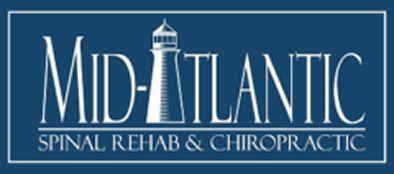Do I Need an MRI after a Baltimore Auto Accident Injury?
As you no doubt are already aware, as a Baltimore Chiropractor that spends the majority of my time treating auto accident injuries and other personal injuries in Baltimore, I spend my fair share of time treating post-traumatic headaches, neck pain, back pain, and the occasional radiating arm or leg pain. I also treat patients that have not been involved in auto accident injuries but I find that the diagnosis and treatment of auto accident injuries is more interesting since it requires a deeper understanding of anatomy and physiology as well as more hands on “case management”. By that I mean I am often not just treating these Baltimore auto accident injury clients alone, I am part of a bigger team that usually involves a medical doctor, and perhaps even a pain specialist or orthopedic surgeon.
One of the questions that I often get asked by some patients is “Do I need an MRI?”. So let’s talk about that. First off, MRI is an acronym that stands for Magnetic Resonance Imaging. It is a sophisticated medical device that uses our bodies own atoms in a magnetic field to produce a truly amazing three dimensional rendering of the body in real time. We are truly looking inside a living being at a moment in time and assessing the structure of not only their bones, but also their intervertebral discs, ligaments, tendons, and blood vessels.
Typically following even low speed rear-end injuries I like to take x-rays of my patients. This allows me to assess their bony anatomy and draw inferences upon their intervertebral disc heights. This can help me better understand what is going on before I lay my hands on them in an effort to begin treatment. X-rays are, however, limited in the information that they convey. For the most part we can only discern fractures, dislocations, and hypermobile joints by way of xray. And on top of that we can only see bone. Don’t get me wrong- that information is incredibly useful if a patient is guarding or if there has been direct blunt force trauma to a window or if there has been airbag deployment. But after a few weeks of treatment there is little to no clinical benefit in performing repeat x-ray analysis.
After I evaluate a new patient following a Baltimore auto accident injury, I try and explain the courses of healing and how long a patient might expect to feel pain and remain under my care. I almost always suggest that within 10-12 visits (usually one calendar month) I will perform a similar re-evaluation and make future treatment recommendations. My goal by this second phase of care is to have determined whether or not I suspect the patient needs an MRI. I am typically looking for a return to pre-injury level of ranges of motion, and at least a 50 percent improvement in returns to activities of daily living and pain levels from the initial visit. That is, let’s say a patient presents day 1 with neck pain that is 9/10 and severely restricted ROM. By the 12th visit if all is going according to plan, they should be at or below a 4/5 out of 10 on the pain scale, should have nearly restored their neck ranges of motion in all planes, and should be working at full duty capacity. If those things (or more) are occurring by this stage, I am happy with their progress. I simply reduce their reliance on my therapy and see them only 1-2x/week for another 6-8 visits where I again monitor their progress.
But let’s say these patients are not that fortunate. Maybe the same example from above only sees an improvement to pain levels at an 8/10. Maybe they still can’t work because their neck is too stiff, and maybe they’ve developed some radiating numbness, tingling, and/or weakness into an arm. This is a completely different story in my eyes and one that requires further evaluation.
It is at this point that I will typically make sure that the patient is evaluated by either an orthopedic surgeron or a pain management specialist. I want to know if these other providers are “on board’ with my analysis that these clients are not improving and I want their “second opinion” as to whether or not any further diagnostic testing, such as MRI, may be helpful in the diagnosis and case management of our fictitious patient.
So to answer the question that I posed in the title “Do I need an MRI?” – the answer is, it depends on a case by case basis. We almost always try and utilize the least invasive modalities and procedures before taking the next step and coordinating for an off-site MRI. I tell most patients when they begin treatment that I hope that they do not need an MRI or to see a specialist, but if they fail to improve as expected then I will have my staff take care of a referral on their behalf. I always hope that MRIs are not necessary, but when they are, we are happy to coordinate care.
If you, or someone you know, has been injured as a result of a Baltimore auto accident, please contact Mid-Atlantic Spinal Rehab & Chiropractic. We would be happy to help, whether your care requires an MRI or not!
Dr. Gulitz
